
The Rifleman’s Rifle.
Winchester’s marketing slogan was quite a bold statement, but one that was not braggadocio. When the Model 70 was introduced – way back in 1936 – it represented what I consider to be the ultimate culmination of the American bolt-action hunting rifle. It had all of the necessary appointments: a strong action – closely related to the Mauser Gewehr 98 – with a reliable extractor, capable of handling the highest of cartridge pressures, a well-fitting stock, an excellent trigger and a three-position safety which would (eventually) work perfectly with a rifle scope.
The Model 70 set the bar for American bolt guns for a quarter-century, until the machining that produced the rifles had seen their day, and needed a serious overhaul. Rather than revamp the machinery – as the story goes – Winchester decided to make some serious and little liked, changes in the design of the rifle. The rifle became a push-feed affair, with many features that were cost-effective, yet the post-’64 models – the year the radical changes were made – have always been sort of frowned upon, at least in comparison to the pre-’64 variants, which have been held in the highest regard among hunters, shooters, and collectors.
***Gearing up for hunting season? Check out these tips for tricking out your bolt-action.***
A Long Winding Road
Winchester has gone through its ups and downs, including a closure of the New Haven, Connecticut plant, but there’s good news: the rifle is back, and it’s a good rifle. It is in the vein of the last wave of the New Haven Model 70s – which featured many of the pre-’64 features – and is a smart-looking, sweet-handling and efficient rifle, perfect for hunting around the globe.
Now owned by the Belgian company of FN Herstal, the Winchester Model 70 is now marked as being ‘Made in Portugal.” The lines of the rifle are relatively true to the latest issue from the New Haven plant, with the exception of a redesigned trigger. The same smooth action is there, along with a checkered walnut stock that feels very good in the hands. The checkered bolt handle sits just where it should, if you’re familiar with the Model 70 design, and the trigger feel will be equally familiar. The design is controlled round feed, with the large side band extractor and blade ejector. All the benefits of the original design are there, minus some cosmetics and the modern Model 70 is a worthy heir to the name.
SPECS:
- Weight: 7 lbs, 12 oz.
- Caliber: .338 Winchester Magnum (tested)
- Action: Bolt-action
- Barrel: 26”hammer-forged steel
- Magazine: 3 shot fixed, hinged floorplate
- Sights: None furnished, drilled and tapped for scope mounts
- Stock: Grade I walnut
- Finish: Blued steel
- Overall Length: 46 ¾”
- MSRP: $1,049.99

A Leupold VX3i 3.5-10×40 riflescope – set in Talley Rings and bases – made a great mate to the Winchester 70 Sporter
Paying homage to the original Model 70s, the bolt is very easily disassembled, without tools. Simply cock the rifle (which cocks on the upstroke of the bolt), put the safety in the middle position, remove the bolt via a small spring-loaded tab on the rear left side of the receiver, and depress a tab on the rear of the bolt. The bolt shroud screws out easily via that one small tab, and voila! The firing pin and spring are exposed for both cleaning and lubrication. A hinged floorplate is released by depressing a button on the outside of the trigger guard, toward the muzzle end.

The three-position safety, claw extractor and other appointments of the pre-’64 design are retained on the modern Model 70 Sporter.
Differences
The major revision to the Model 70, as compared to the models from the end of the New Haven-era, has been the M.O.A. trigger. Winchester put quite a bit of time and effort into the development of this trigger design, and in my opin, on it paid off. A trigger can make or break a rifle, and the M.O.A. is an asset to the Model 70. Winchester claims virtually no take up, creep or over travel, and they’re not far off the mark.
The M.O.A. trigger uses a takeup spring in order to keep the trigger in constant contact with the actuator, which is directly in contact with the sear. It’s a rather simple design, yet very effective. I felt the slightest amount of creep – much better than many other factory triggers – and less over travel. My Lyman digital trigger scale showed that the Model 70’s trigger broke at 3 lbs., 5 ounces, but the nice, wide trigger makes things feel much lighter than that.
My test rifle came chambered in .338 Winchester Magnum, one of Winchester’s finer designs, and a perfect complement to the rugged design of the Model 70. If I had to find one complaint with my test rifle, it would be in the barrel dimensions. The 26” length of the hammer-forged barrel posed no pro blem, but it was a rather thin barrel, reducing the overall weight, and increasing the felt recoil. The satin-finished stock fit was superb, with a comb that was well-suited for use with a riflescope, the barrel was clean, with no iron sights and the checkering on the pistol grip and forend gave a positive grip when bringing the rifle to shoulder. Again, we’re talking a classic Winchester 70, a feel we’re all familiar with (or should be) and the new models are a worthy effort.
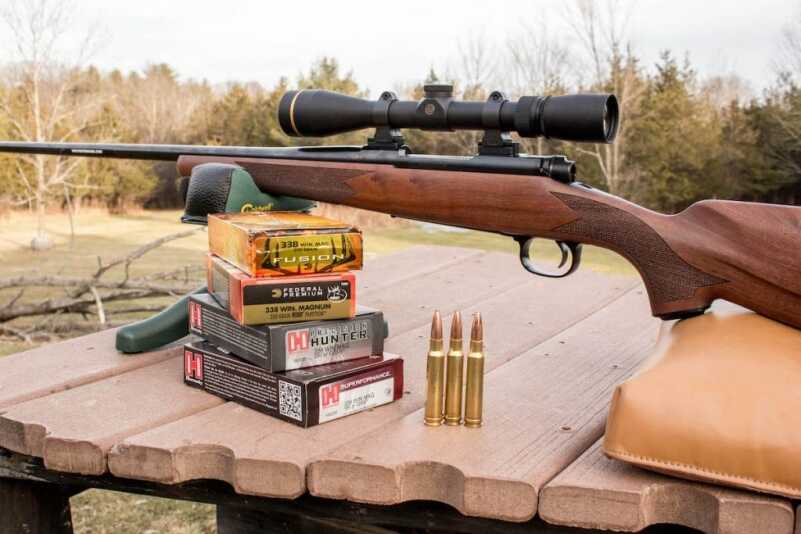
The Winchester Model 70 at the bench. The recoil generated by the .338 Winchester Magnum is not for the faint of heart, especially with a thin barrel and light rifle.
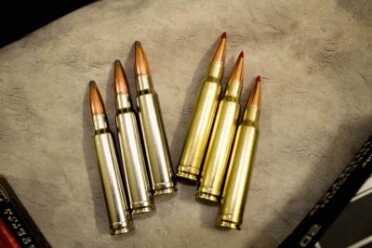
The Federal Premium 250-grain Nosler Partition load (L), and the Hornady Precision Hunter 185-grain GMX Loads (R)
The cartridge.
The .338 Winchester Magnum was one of the initial trio of magnum cartridges by Winchester in 1958, including the .458 Winchester Magnum and the .264 Winchester Magnum. All three are based on the .375 H&H Magnum, with the case shortened to 2.50”. The bullet diameter itself comes from the earlier .33 Winchester, a rimmed cartridge designed for the Model 1886 lever-action.
The OKH series of cartridges – the efforts of Charles O’Neill, Elmer Keith and Don Hopkins – saw both the .30-’06 case and a shortened .375 H&H case mated with the .333” diameter bullets of the .333 Jeffery cartridges, and the trio of hunters used them with great success. Winchester, already geared up to produce .338” diameter bullets I presume, used that bullet diameter for the new medium cartridge.
It has proved itself as a perfect choice for hunting the big northern bears, as well as the larger ungulates of North America. As an all-around choice for an African plains game, the .338 makes a fine cartridge, especially if zebra, sable or eland are on the menu.
It’ll drive the heavy 250-grain slugs at 2,650 fps, and the lighter 200 and 225-grain bullets even faster. This all results in a useable trajectory, and plenty of horsepower; however, that horsepower comes at the price of increased recoil in comparison to the 7mm and .30 caliber cartridges. Off the bench, the .338 Magnum can be a beast, and I recommend that once your rifle is properly sighted in, you leave the bench and practice in more comfortable field positions.

The 250-grain Partition load. Typical of this rifle, it would print two shots very close to one another, and then send the third wide. Whether barrel heat or bedding is the culprit, I do not know.
The scope of things.
For glass, I chose a Leupold VX-3i 3.5-10×40 scope, one-inch tube, set in Talley mounts. I love the Talley’s for their rigidity and simplicity; in rifles from .22-250 to .404 Jeffery, they’ve never let me down, never come loose, and never failed to function perfectly. The VX-3i series of scopes from Leupold have a rather impressive set of lenses; they are a definite improvement over the VX-3 series in both light transmission and clarity.
This particular Leupold could be described as a ‘Plain Jane’, in that it uses a simple duplex crosshair, with no physics equations dangling in the reticle, or other complex appointments. This is a hunting scope, plain and simple, with a fixed parallax setting, and few moving parts. With a highly useable magnification range of 3.5x at the bottom and 10x at the top, there should be no issue making a shot at sane hunting ranges, or of quick target acquisition at close ranges. With ¼ MOA clicks, a matte finish and a weight of 12.6 oz, this scope makes a perfect choice for a worldwide rig like a Model 70 in .338 Winchester Magnum.
At the Bench.
I took the Model 70 out to the range with four different factory loads: Federal Premium’s 250-grain Nosler Partition, the Fusion 225-grain load, Hornady’s Precision Hunter with 230-grain ELD-X bullet and Hornady’s Superformance 185-grain GMX bullet. I zeroed the rifle using the Fusion ammo, as it sat in the middle of the weight/speed spectrum, and immediately noticed a couple of things.
One, the recoil of the .338 Winchester Magnum was just as I had remembered it: sharp, fast, and substantial. In this particular model, weighing in at an even 9 lbs unloaded, but with scope, bases and rings – there was a significant muzzle jump. Again, the barrel is on the thin side; perfect for carrying, but not exactly bench friendly. It wasn’t the worst I’ve ever experienced but was remarkable. Two, that thin barrel heats up quickly, very quickly. It heats up to the point that five shot groups were pretty much out of the question, so I limited it to three shots. Again, a dream to carry, but that lighter weight comes at a price.
Accuracy
This particular Model 70 didn’t demonstrate the finest accuracy I’ve ever seen, but a couple of the loads proved to be acceptable in the hunting world. In reality, any load that will print 1.5 MOA at 100 yards will still suffice out to 300 or so, reliably striking the animal in the center of the vital organs. This rifle was exactly that, a minute-and-a-half gun, and while in this day and age every rifle is supposed to be able to hit the Sea of Tranquility offhand, that isn’t always the case.
The rifle put both the Federal Premium Partition load and the Hornady Superformance GMX load into an average of 1 ½” groups at a hundy, with the other two loads printing between 2” and 2 ½”. Funny thing is, this rifle had a considerable disparity on the point of impact with the differing bullet weights. The lighter (and faster) the bullet, the higher it would print. The total range of impact between the 185-grain GMX and 250-grain Partition was 9” vertically, with things staying relatively close horizontally. Not a truly big deal, but if you want to change loads, a scope adjustment is most definitely in order. The Leupold VX3i tracked very well, moving the center of the group exactly where I wanted it. Like so many other Leupold scopes, the .338 Winchester’s recoil posed no issue.

If I had to take issue with anything, it would be the finish, especially inside the bolt cut. It was, well, sloppy.
Lasting Impressions
Is the Portugal a carbon copy of the pre-’64 Winchester Model 70? No, it isn’t, but is it a good rifle? Yes, it is. I’ve shot others in different calibers that were not as finicky in the accuracy department, but the elements of the rifle are all there. If I had to pick some nits, I’d say that the finish of the stock seems a little uneven, and perhaps the checkering a bit rough. That said, the action has the same smooth, buttery feel that the 70 is known for, and the rifle I tested fed perfectly and extracted like a dream.
Cartridges went into the magazine with a positive feel, and loading three in the magazine and slipping a fourth into the chamber was no issue at all. The rifle came to the shoulder nicely, and the stock design allowed for the Leupold scope to be mounted at a good height, allowing for proper cheek positioning; I dislike having my jawline on the comb, especially on a hard-kicking rifle.
While it may be sacrilegious to some to see the Rifleman’s Rifle being made in a foreign country, I’m personally happy that the Winchester 70 is still with us. In a world of rifles based on this or that classic rifle, it’s good to have the original – even in a different incarnation – around and available. Production costs rise, labor costs rise, and the shooting public – especially here in America – wants their rifles cheap. The world saw the pre-’64 mutate into the post-’64 as a result of costs, and that’s not the only model or brand that has had that experience. I’ve used Winchester Model 70s – in various incarnations – all around the world, and they’ve never let me down. I feel the same way about this latest incarnation.
For more information about Winchester Repeating Arms, click here.
***Check out GunsAmerica for an original Winchester Model 70.***

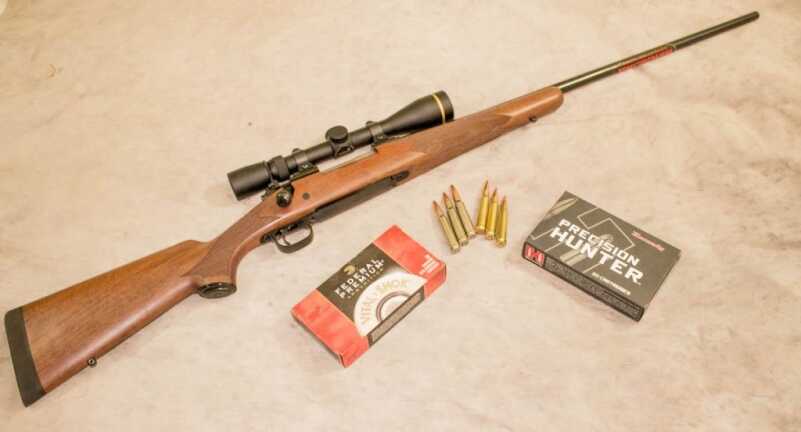

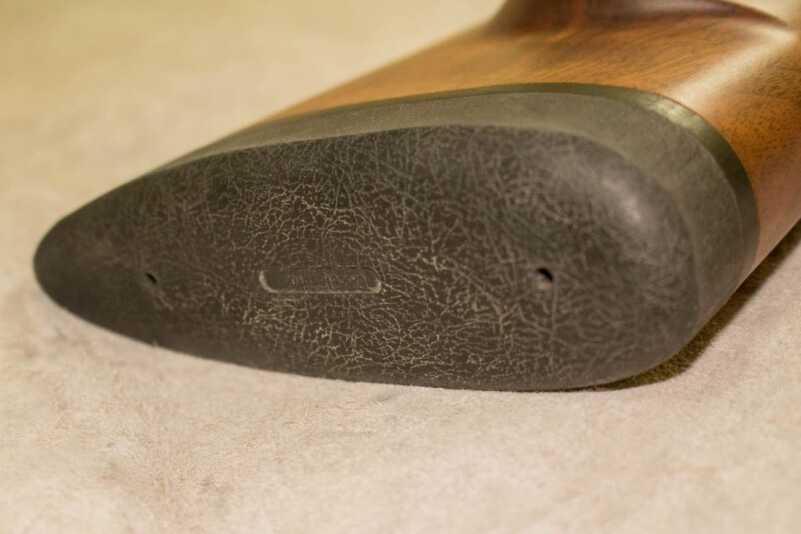
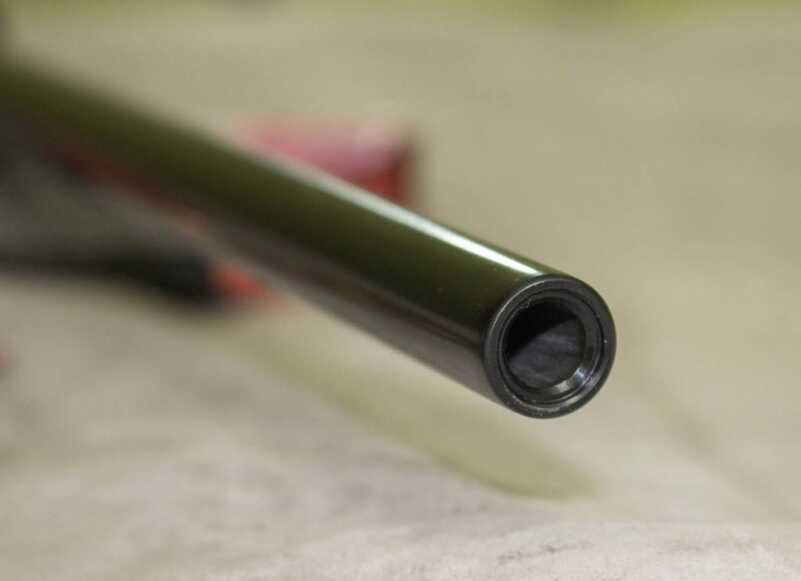
I had a browning rifle that was Belgian made and assembled in Portugal. one of the best rifles I ever had. sorry I sold it so I had no problem with winchester building rifles there. I ordered a mod. 70 super grade in 338 mag to replace my custom mauser that has been my everything rifle including targets and tin cans for 35 years. a barrel brush has to be 35 cal. to meet much resistance but with a fouled bore it still shoots tight groups. my new mod 70 sprays all over the target. i have adjusted the trigger as far as i can and it still is way to stiff. the wood is not what i have seen advertised and i paid 1349 dollars for it. Still I would be happy with it if it would shoot 1.5 inch groups with any weight bullets
The 338 win mag is strictly a hunting gun. You can have fun reloading it to get the best groups and then put it away. It will be your ‘ go to’ rifle when you need it. My reloads will shoot “3/8” group at 100 yards
and I still have those same 100 reloads in my safe. I’ve seen that 250 gr bullet go through 39 inches of a
wild boar and he skidded on his nose for about 6 feet. The 338 Will do less tissue damage than my 270 or
my 30/06. It’s not your all around caliber but it is a hunting gun. And…. don’t worry, I still have a lot of fun
with other centerfire calibers too. Vic Mazzone
I would love this gun in .338 magnum I have 100 rounds of Norma brass waiting to load up with 210-grain Nosler partition and some 250 grain Nosler partition norma does not make brass for this anymore and I think Portugal makes fine Winchesters i know Japan did.
Got a new Featherweight last yr.,,made in Columbia, SC….Rifle is flawless in every way except that MOA trigger is not user adjustable..I put a Timney in it myself,wow, easy adjust to 2.5#s…300 mag shoots ..1/2″–3/4 ” groups.
Looks just like the remington 700 classic series from the 1990s.
A thousand plus bucks. Made where? A WHAT? A Winchester! Not for me. It ain’t an American Winchester it’s only a copy marketed by Winchester.
You sir are 100% right on the nose! If it says “Winchester” it should be made in America.
Winchester wants a grand for this gun when you can get a sub MOA for less than 600 bills? Winchester it is time to up your game!
i’m curious then….tell me who manufactures a new bolt action rifle with….controlled round feed, real wood stock,hinged floor plate, a 3 position safety, a forged receiver/bolt assy, a 26 inch barrel ,with a pachmayr recoil pad for 600 hundred dollars, or even 1000 dollars,for that sake….bet you can’t name any….i feel Winchester is doing a great job with the newest versions of the iconic model 70’s..in fact, name me one manufacturer on a large scale like Winchester,who even makes a controlled round feed bolt action rifle any longer..and I do not consider companys like montana,kimber,or some Dakota made models,on the same scale as Winchester…those are what some would consider,semi custom made rifles…that leaves Ruger M77, as the only sub 1200 dollar rifles that make a crf action….CZ NO LONGER produces a crf action until you get into their safari type rifles,and those are priced over 1600 dollars!!! you have mauser still making CRF actions,but those are big dollar rifles anymore,…brno or zasatva make crf,but honestly,the last 2 brands are not all that represented in the usa…when is the last time you walked into a cabela’s,or bass pro and saw a rack filled with them??? so,like I say,WINCHESTER ,STILL MAKES ‘THE RIFLEMANS RIFLE’…..PLAIN AND SIMPLE
I bought a brand new Win 70 in 338 a few years back. After shooting it a few times I noticed it had all sorts of issues with the biggest being a loose fitting bolt. When I went back to the LGS to return/exchange for one that wasn’t messes up, the store owner found that his remaining 3 rifles had the same problems. Hopefully they fixed it in this version.
I enjoyed reading this article about the latest Winchester Model 70. One mistake I noticed, however, was that the author stated the .458 Winchester Magnum was introduced in 1958 along with the .264 and .338 Winchester Magnums. The .458 was actually introduced two years earlier, in 1956.
yes, you are correct… .458 win mag was first introduced in 1956!! ….and…..the .264 win mag was first introduced in ….1959!!! so,the author of this article was 1 for 3 lol,lol,lol……
What’s sad is the Portugal M70’s fit and finish beats anything that came out of New Haven after 1964. Or maybe that’s a good thing…
“Happy the Winchester Model 70 is still with us” From your review it seems that is not the case, it’s a shame…
Thank you for review and taking the abuse at the bench for us!
well at least its still made,,the tactical market has killed off a lot of the bolt actions,among others,,,,,
This will come off as anachronistic or worse but…
A Model 70 made in Portugal rings a bit hollow. The rich heritage of this rifle of rifles seems as American as the great plains (Mauser influence notwithstanding). It is a sad reality of our global market that icons of culture are eroded by flimsy economics and bottom line thinking.
Don’t take me wrong- I love Portugal….but not on my Winchester.
Right on
a Thousand Bucks and it don’t even have IRON SIGHTS ?
no,i guess is DOESN’T.. but… name 5 bolt action hunting rifles made today,that come standard with… iron sights, real wood stocks, controlled round feed, hinged floor plate, and a 3 position safety..bet you can’t……lol,lol its just the world we live in I guess.